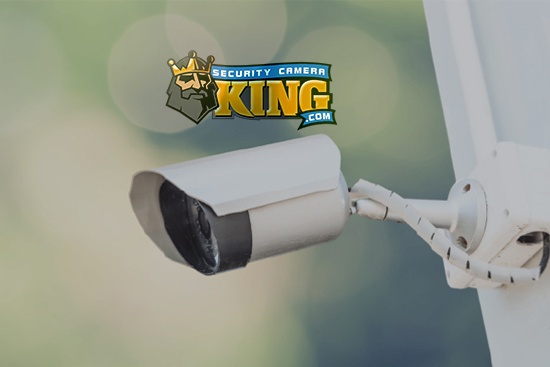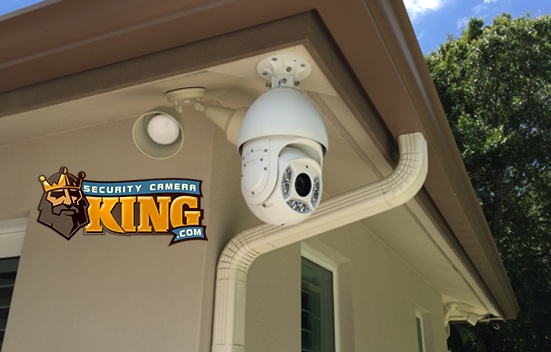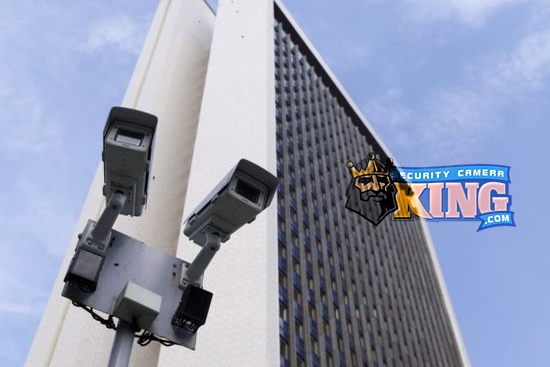How to find IVS footage Quickly
Hi everyone Joe here with a new article, and accompanying video guides for you; Today, we’re going to cover “How to find IVS footage Quickly”. So what is IVS anyway? Well IVS is short for Intelligent Video Surveillance, and it represents a subset of alert and recording settings within your recorder. IVS was developed to work alongside, or instead of features like motion detection to further reduce the number of false alerts a particular camera is triggered by. Additionally IVS is designed to help you not only reduce false alerts but create even more accurate moments of noted recording. This allows you, like with motion detection based recordings, to go back into the recorder later on and look specifically for this footage. Much like motion detection based recordings, IVS footage can be set up to recorder 24/7, only during certain times, or in tandem with 24/7 Recording. now, before we can even answer for you “How to find IVS footage Quickly”, you first need to have this feature set up, and we’re going to breifly go over that as well as include an accompanying video for you.
IVS Setup
- First, log in to your recorder or your browser to get started. Once you are logged in, it should place you directly under the main menu.
- If you’re using a PTZ camera, you’ll need to first set up a preset in order to be able to use your IVS rules. Since we are using a PTZ camera for this example, let’s go to the Live View. Once on the Live View, select the camera that you’ll be using and then double-click the center of the screen to expand the image.
- Once you have a full-sized image that you can properly manipulate, use the PTZ arrows on the control center to move the camera to a position you’re comfortable with.
- Once you have the position locked down, you can either use AB preset #1 or change the number and add it there.
- When the preset successfully adds, this will be indicated by the word preset and the number appearing in the upper left-hand corner of the image.
- Now that you have your preset, it’s time to do the IVS rules. Return to the Main Menu by clicking the monitor in the upper right-hand corner. Depending on what kind of recorder you’re working with, you’ll have to access the IVS settings from one of two different menus on the left side.
- If you’re using the AI recorder, click AI. From here, you’ll need to de-collapse the parameters tab.
- Once de-collapsed, select Smart Plan. Make sure the channel you’re working with is selected and click the IVS light bulb then click OK in the bottom right-hand corner to save the setting.
- Returning to the parameters tab, we’re not going to need to click the IVS tab. If using the other kind of recorder, click Smart Detection. Next de-collapse the parameters tab then simply click IVS. From this point forward, the menu should be the same.
- Switch back to a single screen. The first thing you’ll need to do once arriving on the IVS page is to make sure that you have selected the proper camera channel you are working with.
- When you’re ready to add a rule, click the plus sign. When the rule populates in, it will automatically be set to the Tripwire setting by default. The rule’s directional setting will also be set to All or Both, meaning if an object crosses the line in either direction it will trigger the rule. You can make this a one-way line by setting A to B or B to A. You may have to click the Draw Rule box to start drawing but often the system is already unlocked.
- When ready, simply left-click on the screen to start your line and right-click to end your line. You can see the line created here and you can see an arrow going both ways across matching our Both directional setting we currently have.
Setting A to B makes the arrow go one way and setting B to A makes it go another way. You’ll see that based on the way the arrow is set by the time the red car drives over the line that it would have ignored the car if we had saved and locked this rule down.
- We’re going to leave our rule set to Both. There are other parameters you can set, as well. If your recorder and camera are AI-capable, you can tell your system to ignore people or vehicles crossing the rule.
- If you have an auto-tracking PTZ, you can set a track time and check the box to have the camera track any object that crosses the rule. This is going to be set for a maximum of up to 300 seconds.
- There is also a period setting. What this does is allow you to set a schedule for the rule. Otherwise, by default, the rule will be active 24 hours a day, seven days a week.
Below the Period setting, you see a Post Record-setting. This indicates how long the record channel will record after the rule happens on a schedule that isn’t set to default record 24/7.
From your Alarm Out option, you can have an alarm out trigger on any of your alarm ports when the alarm is triggered for the record channel. This tells any number of camera channels that are set and selected to record when this rule is triggered, even if it isn’t the same camera the rule is taking place on. The tour will cause any default tours to occur on any cameras that are set and you can find even more advanced PTZ settings and activation capabilities where any number of cameras can be told to use a preset or tour a pattern or a scan upon the activation of the rule.
- You can even do this with an intrusion rule as well, the only difference is the lines connect to form a box.
- You’ll also need to go to your storage settings, and enable IVS footage across the channels, days, and times you need!
IVS Lookup
- First, log in to your recorder or your browser to get started. Once you are logged in, it should place you directly under the main menu.
- If you’re using a PTZ camera, you’ll need to first set up a preset in order to be able to use your IVS rules. Since we are using a PTZ camera for this example, let’s go to the Live View. Once on the Live View, select the camera that you’ll be using and then double-click the center of the screen to expand the image.
- Once you have a full-sized image that you can properly manipulate, use the PTZ arrows on the control center to move the camera to a position you’re comfortable with.
- Once you have the position locked down, you can either use AB preset #1 or change the number and add it there.
- When the preset successfully adds, this will be indicated by the word preset and the number appearing in the upper left-hand corner of the image.
- Now that you have your preset, it’s time to do the IVS rules. Return to the Main Menu by clicking the monitor in the upper right-hand corner. Depending on what kind of recorder you’re working with, you’ll have to access the IVS settings from one of two different menus on the left side.
- If you’re using the AI recorder, click AI. From here, you’ll need to de-collapse the parameters tab.
- Once de-collapsed, select Smart Plan. Make sure the channel you’re working with is selected and click the IVS light bulb then click OK in the bottom right-hand corner to save the setting.
- Returning to the parameters tab, we’re not going to need to click the IVS tab. If using the other kind of recorder, click Smart Detection. Next de-collapse the parameters tab then simply click IVS. From this point forward, the menu should be the same.
- Switch back to a single screen. The first thing you’ll need to do once arriving on the IVS page is to make sure that you have selected the proper camera channel you are working with.
- When you’re ready to add a rule, click the plus sign. When the rule populates in, it will automatically be set to the Tripwire setting by default. The rule’s directional setting will also be set to All or Both, meaning if an object crosses the line in either direction it will trigger the rule. You can make this a one-way line by setting A to B or B to A. You may have to click the Draw Rule box to start drawing but often the system is already unlocked.
- When ready, simply left-click on the screen to start your line and right-click to end your line. You can see the line created here and you can see an arrow going both ways across matching our Both directional setting we currently have.
Setting A to B makes the arrow go one way and setting B to A makes it go another way. You’ll see that based on the way the arrow is set by the time the red car drives over the line that it would have ignored the car if we had saved and locked this rule down. - We’re going to leave our rule set to Both. There are other parameters you can set, as well. If your recorder and camera are AI-capable, you can tell your system to ignore people or vehicles crossing the rule.
- If you have an auto-tracking PTZ, you can set a track time and check the box to have the camera track any object that crosses the rule. This is going to be set for a maximum of up to 300 seconds.
- There is also a period setting. What this does is allow you to set a schedule for the rule. Otherwise, by default, the rule will be active 24 hours a day, seven days a week.
Below the Period setting, you see a Post Record-setting. This indicates how long the record channel will record after the rule happens on a schedule that isn’t set to default record 24/7.
From your Alarm Out option, you can have an alarm out trigger on any of your alarm ports when the alarm is triggered for the record channel. This tells any number of camera channels that are set and selected to record when this rule is triggered, even if it isn’t the same camera the rule is taking place on. The tour will cause any default tours to occur on any cameras that are set and you can find even more advanced PTZ settings and activation capabilities where any number of cameras can be told to use a preset or tour a pattern or a scan upon the activation of the rule. - You can even do this with an intrusion rule as well, the only difference is the lines connect to form a box.
- You’ll also need to go to your storage settings, and enable IVS footage across the channels, days, and times you need!
IVS Lookup
We’re going to go to playback from the menu screen, or from the live view right click and hit “search”. You’ll notice that there’s a timeline of color-coded footage at the bottom seek bar. you’ll also notice a list of camera channels and a calendar to the right displaying a dot beneath each day you have available footage. From here, you can deselect any cameras you don’t want to focus on, and leave any selected up to four. To Find IVS Footage Quickly, you can just look at the seek bar! If it’s BLUE, there’s IVS footage there, which is different than the standard recording of ‘green’ You can also scroll into the bar to zoom in for more precise time breakdowns. Additionally, you can deselect any footage type you don’t want to see so that only the motion footage remains visible as a playback option!
Thanks for joining us today as we showed you “IVS Setup” and “How to find IVS footage Quickly”. Check out our video guides on these for a much more detailed look at the visual steps of how to do this! If you enjoyed the videos or found them useful, please toss us a ‘like’, and don’t forget to hit that subscribe bell for more CCTV content in the future. Until next time, stay safe!
Related: Best Active Deterrence Camera Set up
Related: How Does CCTV Motion Detection Work
Related: How to terminate and test Ethernet Cable
Related: What’s the difference between DVR and NVR?
Related: What’s the difference between H264 and H265?
Related: IP PTZ Security Cameras – All There is to Know
Related: Resolution, and why does it matter?
Related: What are active deterrence cameras?
Find Us On: Facebook | Twitter | YouTube











